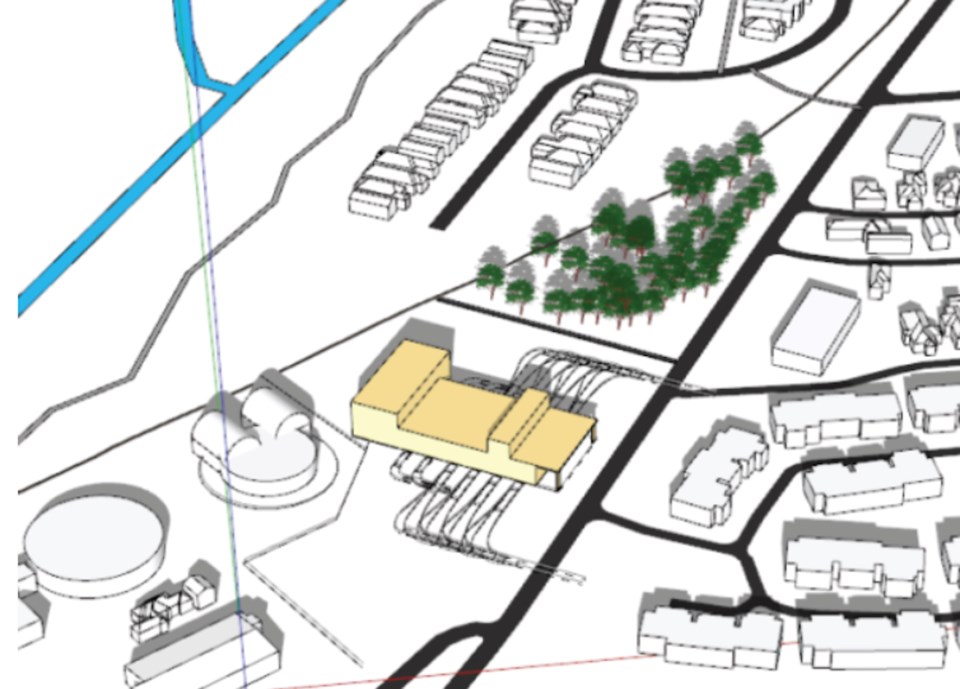Elected officials have passed a highly unusual motion amidst highly unusual circumstances.
After just having denied the proposal about a month ago, Squamish residents will yet again have a chance to decide whether to give the municipality permission to borrow money for a new public works facility.
On April 26, District council voted unanimously in favour of giving three readings to a public works facility loan authorization bylaw.
All on council were in favour of the motion.
“This is an important step that we’re taking, and I’ve had some folks in the community ask if we’ve looked at all possible scenarios for replacing public works,” said Coun. John French. “I believe that they all have been explored, and the direction that we’re taking is the appropriate one. Don’t want us to go cheap on this project. It’s not fiscally responsible.”
If this new bylaw passes through the final phase of adoption, the municipality will have the ability to borrow about $20 million for the construction of a new public works facility.
However, before it gets adopted, it must pass through the second alternative approval process for this borrowing proposal roughly just a month after residents shot down the first.
On March 1, municipal officials revealed the District’s request to borrow roughly $16 million for a new public works yard had been denied due to almost 1,700 locals voting against the proposal.
Bylaws asking for big loans must pass through an alternative approval process, where residents are allowed to cast a ballot against a proposal. If 10% of the voting population disapproves, then the municipality has two options.
First, it can hold a referendum on the matter, where the majority vote will decide. Second, it can initiate another alternative approval process on the proposal and hope that the second attempt works out in its favour.
In this case, the District has opted for the latter. If this second alternative approval process does not work out, a referendum on the loan will be held on Oct. 15 — the same day as the municipal elections.
In the eyes of elected officials and staff, a loan authorization for public works is a necessity and would be the cheapest option.
The facility must be built, either way, they said, and borrowing would prevent a sudden tax hike in the short term.
“The public works facility has been identified in the Real Estate and Facilities Master Plan as a critical facility at the end of life,” said District chief financial officer Heather Boxrud. “It is important to note that the decision to build the facility has been made.”
On the other hand, some who voted against the borrowing proposal the first time have said they had problems with transparency. They complained the District was not forthcoming with exactly how the money would be spent. Those voters also questioned why money couldn’t be spent on other projects.
However, District officials are set on making a new public works facility a reality.
“There were claims that if [voters] were to sign the petition that they should sign it because it would make this fail, and we’d fund Brennan Park instead,” said Coun. Jenna Stoner.
“And that’s not how this is going to work. And so we heard loud and clear that we need to do our due diligence in terms of increasing our communications about this project.”
Boxrud said if the municipality were to forgo borrowing and raise the money through a one-year tax increase, a homeowner with a $1-million property valuation would pay about $1,510. That figure would be $755 if the increase was spread over two years.
Those respective numbers would be $3,880 and $1,940 for business properties.
On the other hand, the chief financial officer said, if the municipality were to engage in the long-term borrowing proposed in the alternative approval process, residential property owners with valuations of $1 million would pay $116 per year, and business property owners would pay $298.
“In this instance, it’s more reasonable on a year-over-year expense to spread it out over the lifetime of the building, and, also, it’s spreading it out over an increasing tax base,” said Coun. Armand Hurford. “So the residents of [Squamish] today aren’t shouldering the entire bill for a piece of infrastructure that will serve the community for 20 plus or more years. It’s spread out over the growing community, and the tax impact year-over-year will decrease as the community increases.”
Andy Yan, director of SFU’s city program, told The Squamish Chief it was peculiar that something like a public works facility would become a point of political contention.
“Public works yards are…not these [means] to political ambition. They’re operational,” said Yan.
“They’re boxes with storage yards or trucks of just what you need to keep a municipality going.”
While he noted he could understand the financial challenges of the pandemic have made people wary of spending on significant new projects, there’s a need for basic municipal operations to keep functioning.
“I think there are a lot of households that are stressed,” said Yan. “But then, of course, the other side of it is the fact that it’s better to deal with certain operations on a schedule than [in] emergency patches.”




